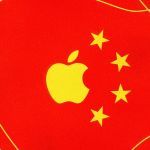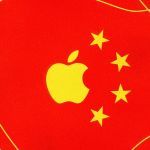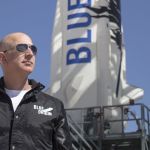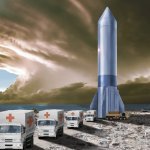Dominique Luchart's Blog, page 601
June 8, 2021
Waabi, the rare autonomous vehicle startup with a woman CEO, raises $83.5 million,

Waabi is a new autonomous vehicle startup with a few things going for it to help it rise above the fray.
For one, it’s founded by Raquel Urtasun, a renowned expert in computer vision who ran Uber Advanced Technology Group’s Toronto outpost, making it one of the few women-led AV startups in the world. Second, the Toronto-based company just came out of stealth having raised $83.5 million, which is among the largest Series A rounds ever raised in Canada.
The round was led by Khosla Ventures, with additional participation from Urtasun’s former employer, Uber, and Aurora, the AV startup that ended up acquiring Uber ATG in a deal last year. Funding was also raised from 8VC, Radical Ventures, Omers Ventures, BDC, AI luminaries Geoffrey Hinton, Fei-Fei Li, Pieter Abbeel, Sanja Fidler, and others.
That’s a pretty auspicious start for a company that’s jumping into a very crowded space with dozens of startups trying to solve what is arguably the world’s hardest problem: how to make cars and trucks drive themselves safely, reliably, and efficiently.
Waabi’s approach will be to focus on trucking, using its proprietary software to automate driving on commercial delivery routes. And with its innovative approach to simulation and machine learning, Waabi says it’s poised to commercialize its technology faster and cheaper than most of the AV startups working today.
Urtasun says her expertise in artificial intelligence, which she has been working on for over 20 years, also gives Waabi a distinct advantage. “I’ve seen really what works, what doesn’t work for AI and technology deployed in a commercial software stack,” she told The Verge.
There are two reasons Waabi is setting its sights on trucks as opposed to robotaxis or last-mile delivery vehicles. One is the “incredible” shortage of truck drivers, which Urtasun said could be rectified by the rapid deployment of fully autonomous big-rigs. The second is that highways are “simpler” than complex city streets for autonomous vehicles to navigate.
There are fears in the trucking industry that autonomous technology will lead to enormous displacement among truck drivers. A 2017 study found that automated trucks could reduce the demand for drivers by as much as 50 to 70 percent in the US and Europe by 2030, with 4.4 million of the 6.4 million professional drivers on both continents rendered obsolete. These fears are heightened as tech companies introduce eye-catching, cabin-less prototypes designed to cut the driver completely out of the equation.
Nonetheless, there’s been a mini-boom in the number of startups racing to be the first to deploy autonomous tractor-trailers. This includes well-financed companies like Waymo, TuSimple, and Aurora; OEMs like Volvo and Daimler; and a host of smaller startups like Ike (which was recently acquired by Nuro), Embark, and Plus.
Waabi’s approach will be more “AI centric” than its competitors, Urtasun says. That means a sophisticated “closed loop” simulation program that reduces the need to accrue millions of miles of testing on public roads and highways. Waabi plans on buying several trucks to test its software, but Urtasun said it won’t need more than a handful of vehicles, thanks to its innovative approach to simulation.
“So for us in simulation, we can test the entire system,” Urtasun said. “We can train an entire system to learn in simulation, and we can produce the simulations with an incredible level of fidelity, such that we can really correlate what happens in simulation with what is happening in the real world.”
Urtasun and her team are also developing a new algorithm that will serve as the foundation for the “brain” of the self-driving car, which helps with motion planning and predicting what other vehicles on the road will do so the AV can react accordingly.
“You end up with a much better scaling technology,” she added, “that you can develop much faster and much cheaper than any of the solutions out there.”
Urtasun started working at Uber in 2017, when the ride-hailing giant brought her on to serve as chief scientist and head of research and development in Toronto. Over the years, her team grew from a small group of eight graduate students to eventually around 50 people.
In Toronto, Urtasun was largely insulated from the chaos that was quickly enveloping Uber’s headquarters in San Francisco. The company’s CEO and co-founder, Travis Kalanick, was ousted a little more than a month after Urtasun’s appointment was announced. And a year later, a self-driving Uber vehicle with a safety operator behind the wheel struck and killed a 49-year-old woman in Tempe, Arizona.
An investigation into the crash faulted Uber for its lack of a robust culture of safety at its autonomous vehicle division. And late last year, Uber finally called it quits, off-loading its beleaguered Advanced Technology Group to Aurora in a bid to reduce costs and signal to investors that it had a real path to profitability. Aurora sent offer letters to about 75 percent of Uber ATG employees, according to TechCrunch — but that did not include Urtasun’s team.
There was surprise among AV sources that Aurora didn’t extend an offer to Urtasun. Today’s news helps explain why. Urtasun said her experience at Uber, including the fatal crash in Tempe, “really imprinted the importance of safety and having safety first” at Waabi. “This is also one of the reasons why we were doing a lot of our development in simulation,” she added, “to reduce also the risk of developing this technology.”
“Raquel is truly one-of-a-kind — a tenacious and inspiring leader who empowers those around her to excel,” said Dara Khosrowshahi, CEO of Uber, in a statement. “I can’t wait to see everything she accomplishes for the self-driving industry.”
In addition to her work at Uber, Urtasun is also a University of Toronto professor and the Canada Research Chair in Machine Learning and Computer Vision as well as the co-founder of the Vector Institute for AI.
Urtasun said she chose the name “Waabi” because it had a couple of relevant meanings. Among Canada’s First Nations tribes, it means “she has vision,” while in Japanese, it translates as “simple.” The first speaks to Urtasun’s expertise in computer vision and artificial intelligence, while the latter to her company’s intent to simplify the technology that powers self-driving vehicles.
It is rare for an autonomous vehicle startup to have a woman founder and CEO, but Urtasun says she hopes to inspire other women to join the industry. “This is a field that is very dominated by white dudes,” she said. “The way to build integrating knowledge is to build technology with diverse perspectives, because by challenging each other, we build better things.”
The post Waabi, the rare autonomous vehicle startup with a woman CEO, raises $83.5 million, appeared first on NEWDAWN Blog.
Fortnite season 7 has Superman, flying saucers, and a virtual influencer, Andrew Webster
 [image error]
[image error]As expected, aliens have invaded Fortnite’s battle royale island. The game’s latest season — Chapter 2: Season 7 — is called “Invasion,” and it’s just kicked off with a sci-fi vibe that’s a big change from last season’s prehistoric theme.
Among the changes are flying saucers that players can hack and then pilot, weapons like a rail gun that can shoot through structures and a scanning device, along with a crafting material called nuts and bolts that lets players make classic weapons that were previously removed from the game.
As always, the big draw of the new season is the battle pass, which introduces a number of characters to the game for those who purchase it. For season 7 that means Superman (who will be available to unlock later in…
The post Fortnite season 7 has Superman, flying saucers, and a virtual influencer, Andrew Webster appeared first on NEWDAWN Blog.
Fortnite season 7 has Superman, flying saucers, and a virtual influencer,

As expected, aliens have invaded Fortnite‘s battle royale island. The game’s latest season — Chapter 2: Season 7 — is called “Invasion,” and it’s just kicked off with a sci-fi vibe that’s a big change from last season’s prehistoric theme.
Among the changes are flying saucers that players can hack and then pilot, weapons like a rail gun that can shoot through structures and a scanning device, along with a crafting material called nuts and bolts that lets players make classic weapons that were previously removed from the game.
As always, the big draw of the new season is the battle pass, which introduces a number of characters to the game for those who purchase it. For season 7 that means Superman (who will be available to unlock later in the season), a customizable alien named Kymera, a human / alien double agent called Joey, and a hulking battle droid. Perhaps the strangest addition is Guggimon, a virtual influencer with more than 1 million followers on Instagram.
For those playing on PC, the new season will also include a number of visual improvements putting the game on par with next-gen consoles.
The post Fortnite season 7 has Superman, flying saucers, and a virtual influencer, appeared first on NEWDAWN Blog.
Apple’s privacy-focused Private Relay feature isn’t coming to China, Jon Porter

 Illustration by Alex Castro / The Verge
Illustration by Alex Castro / The VergeApple’s new Private Relay feature, which is designed to obscure users’ browsing data and protect their privacy, won’t be available in China, Reuters reports. The feature was announced during Apple’s Worldwide Developers Conference as part of a new subscription bundle called iCloud Plus. Other countries where Private Relay won’t be available include: Belarus, Colombia, Egypt, Kazakhstan, Saudi Arabia, South Africa, Turkmenistan, Uganda, and the Philippines.
The move is the latest concession Apple has made in order to offer its services in China, a market which Reuters notes accounts for almost 15 percent of its revenue. Chinese citizens’ access to the internet is heavily regulated, and there is restricted access to technologies like…
The post Apple’s privacy-focused Private Relay feature isn’t coming to China, Jon Porter appeared first on NEWDAWN Blog.
Apple’s privacy-focused Private Relay feature isn’t coming to China,

Apple’s new Private Relay feature, which is designed to obscure users’ browsing data and protect their privacy, won’t be available in China, Reuters reports. The feature was announced during Apple’s Worldwide Developers Conference as part of a new subscription bundle called iCloud Plus. Other countries where Private Relay won’t be available include: Belarus, Colombia, Egypt, Kazakhstan, Saudi Arabia, South Africa, Turkmenistan, Uganda, and the Philippines.
The move is the latest concession Apple has made in order to offer its services in China, a market which Reuters notes accounts for almost 15 percent of its revenue. Chinese citizens’ access to the internet is heavily regulated, and there is restricted access to technologies like virtual private networks, or VPNs, which help citizens evade tracking and bypass censorship. It’s worth noting that Apple isn’t itself calling Private Relay a VPN, citing technicalities in how it operates, but the service protects users’ privacy in a similar way.
In 2018, Apple started storing some iCloud encryption keys in China and transferred its Chinese iCloud operations to a firm located in China. Although Apple said the move would improve the “speed and reliability of iCloud,” critics said it would also let Chinese authorities access user data through the country’s legal system. The previous year, Apple removed several major VPN apps from its App Store in China in response to local regulations requiring VPN providers to have a government license.
According to Apple, Private Relay encrypts a user’s traffic and sends it through two internet relays in such a way that no entity can see the contents of a user’s browsing data. A first Apple-controlled relay assigns a user an anonymous IP address, while a second third-party relay decrypts the web address and forwards the data on to its destination. Apple says Private Relay hides a user’s traffic from ISPs, advertisers, and even Apple itself.
The post Apple’s privacy-focused Private Relay feature isn’t coming to China, appeared first on NEWDAWN Blog.
June 7, 2021
Apple Music begins rolling out lossless streaming and Dolby Atmos spatial audio, Chris Welch

 Illustration by Alex Castro / The Verge
Illustration by Alex Castro / The VergeApple Music has flipped the switch on its previously announced lossless-quality streaming and spatial audio features. Starting now, if you’ve got the latest iOS, iPadOS, and macOS updates installed, you’ll be able to stream select tracks both in standard lossless/CD-quality audio and high-resolution lossless (if you have an external DAC for the latter).
Apple said both features would arrive “today” during the WWDC keynote, but it took many hours after the event concluded before customers started seeing them appear in the app. You still might not if the rollout hasn’t reached you yet. The update is server-side on Apple’s part.
Be aware that lossless audio files take up considerably more storage when downloaded and also burn through more…
The post Apple Music begins rolling out lossless streaming and Dolby Atmos spatial audio, Chris Welch appeared first on NEWDAWN Blog.
Apple Music begins rolling out lossless streaming and Dolby Atmos spatial audio,

Apple Music has flipped the switch on its previously announced lossless-quality streaming and spatial audio features. Starting now, if you’ve got the latest iOS, iPadOS, and macOS updates installed, you’ll be able to stream select tracks both in standard lossless/CD-quality audio and high-resolution lossless (if you have an external DAC for the latter).
Apple said both features would arrive “today” during the WWDC keynote, but it took many hours after the event concluded before customers started seeing them appear in the app. You still might not if the rollout hasn’t reached you yet. The update is server-side on Apple’s part.
Be aware that lossless audio files take up considerably more storage when downloaded and also burn through more data when streamed. You can dig into all of the technical details and FAQs here. The standard AAC streaming remains the default unless you switch your preference to lossless in the Music app section of iOS settings.

Apple has said that over 20 million songs will be available in lossless quality at launch, with the entire Apple Music catalog of over 75 million tracks going lossless by the end of 2021. Lossless audio is exclusive to Apple Music and requires a subscription; it’s not available for purchase, nor can you upgrade purchased music or get it through iTunes Match.
Lossless audio is available on the iPhone, iPad, Mac, and Apple TV 4K. Support for the HomePod and HomePod Mini will be added after a future software update.
Today is the first time you can also try out spatial audio on Apple Music. Millions of tracks now offer immersive, Dolby Atmos-powered mixes that Apple claims deliver “true multidimensional sound and clarity.” There will be a much smaller selection of spatial audio tracks than lossless ones, however, with Apple promising “thousands” of spatial audio tracks on day one with more to follow.

The company has put together several playlists to showcase the spatial audio Atmos experience across different music genres. Other companies like Tidal and Amazon are also offering these “surround sound” audio formats.
Both features now come included as part of the standard Apple Music subscription. More and more music services are offering lossless audio, and those that already were — like Amazon Music HD — are dropping the extra fees they’d previously charged to enjoy it.
The post Apple Music begins rolling out lossless streaming and Dolby Atmos spatial audio, appeared first on NEWDAWN Blog.
Watch Apple’s Siri blaze through requests with on-device processing,

During the privacy segment of WWDC, Apple talked about moving Siri’s processing from the cloud onto your device, using the “Neural Engine” built into Apple silicon. While having the voice processing happen on your phone instead of one of Apple’s servers is obviously better for privacy, it can also help speed up performance and reliability, as Apple showed off in its demo.
The power of on-device learning.Now let’s see how fast it is when I try it.
Here’s the same Siri demo Apple did, but without on-device processing pic.twitter.com/wLivWJa06p
— Mitchell (@strawberrywell)
Compared to my demo, Apple’s is decidedly more snappy — partially because I don’t have to deactivate Airplane Mode each time I turn it on. (My phone still requires an internet connection for the requests that come after, but the on-device model doesn’t.) Full disclosure: my demo took a few takes, and the first few times the phone did warn me that turning on Airplane Mode would make Siri inaccessible, and I had to tap the switch that turns it off, since I couldn’t do it with my voice.
Apple processing Siri requests on-device should help its users be more confident about the privacy of their data: back in 2019, we learned that contractors were listening to some Siri requests, something that wouldn’t happen if those requests were being handled by your phone alone. While Apple eventually tried to make that situation right by being more transparent and making Siri recordings opt-in, handling more Siri requests on the phone is a good way to make the service a little more trustworthy.
The post Watch Apple’s Siri blaze through requests with on-device processing, appeared first on NEWDAWN Blog.
Jeff Bezos will fly to the edge of space with his brother next month, James Vincent


Jeff Bezos is headed into space, and he’s taking his brother with him.
The Amazon CEO announced the news via a video on Instagram (below). In it, he says he and his brother Mark will be launching into space on July 20th aboard a rocket built by Bezos’ space company Blue Origin. The firm announced in May it would be targeting this date for a first crewed flight, but did not say that Bezos himself would be taking part.
In the Instagram video, Bezos says that taking a journey into space has been a lifelong dream for him, and that it will be “meaningful” to have his brother along for the ride.
View this post on InstagramA post shared by Jeff Bezos (@jeffbezos)
“You see the earth from space and it…
The post Jeff Bezos will fly to the edge of space with his brother next month, James Vincent appeared first on NEWDAWN Blog.
US Air Force wants a commercial Rocket Cargo Vanguard to fly stuff anywhere on Earth, ,

The U.S. Air Force launched a new rocket cargo program with the Space Force Friday (June 4) to study the use of commercial spacecraft to ship supplies around the world — and they may look to NASA’s lunar lander program for ideas.
If the project, called Rocket Cargo, goes as planned, it would take advantage of a swiftly growing rocket industry competing to send satellites into space. While the search for rocket companies has just begun, a concept released by the U.S. Air Force Research Laboratory (AFRL) evokes the sleek, silver Starship prototypes being tested by SpaceX in South Texas.
In the past decade, newer industry entrants such as SpaceX, Relativity Space and Rocket Lab — fueled by new efficiencies in rocket manufacturing, self-landing stages and increased demand for CubeSats — are rising to compete with industry standbys such as Arianespace and United Launch Alliance.
These “new opportunities,” Space Force and Air Force officials said in a joint statement, are “expanding cargo capacity and dramatically reducing launch costs.” The military branch therefore plans to examine how to use the largest available commercial rockets to ship dozens of tons of supplies around the world, especially to remote areas.
“Once realized, Rocket Cargo will fundamentally alter the rapid logistics landscape, connecting materiel to joint warfighters in a fraction of the time it takes today,” John “Jay” Raymond, Space Force chief of space operations, said in the statement. “In the event of conflict or humanitarian crisis, the Space Force will be able to provide our national leadership with an independent option to achieve strategic objectives from space.”
This project would potentially be a large opportunity for participating companies. The USAF’s fiscal 2022 budget includes $47.9 million for rocket cargo, according to SpaceNews, as the military seeks ways to put cargo containers onto rockets that can carry 30 to 100 tons. The advantage over conventional airplanes such as the C-17 is the ability to fly supplies to remote areas in 90 minutes instead of in hours or days.
Officials said in a press conference that they plan to open solicitations “in the very near future,” according to SpaceNews. SpaceX isn’t the only company under consideration, but the military declined to give any other names. One possibility for alternatives, officials added, could be companies that are seeking moon landing opportunities under NASA’s Commercial Lunar Payload Services (CLPS) program.
That could include quite a few companies, if NASA’s website is an indication. Selected CLPS providers for landers so far include Astrobotic Technology, Blue Origin, Ceres Robotics, Draper, Firefly Aerospace, Intuitive Machines, Lockheed Martin Space, Masten Space Systems, Moon Express, Orbit Beyond, Sierra Nevada Corporation, SpaceX and Tyvak Nano-Satellite Systems.
NASA has picked SpaceX’s Starship vehicle to land astronauts on the moon as part of its Artemis program. Blue Origin, which has developed a suborbital reusable rocket called New Shepard, and another company, Dynetics, also submitted bids and are protesting the SpaceX award.
Rocket Cargo would see commercial companies developing the new rockets while the military would “primarily invest in the S&T [science and technology] needed to quickly adapt the capability” for Department of Defense missions, the military release said. The defense department would also be the first customer, procuring missions through service leases.
The companies would be working closely with several military organizations. The AFRL will lead science and technology development, Space Force will act as lead service and the Space and Missile Systems Center will be program executive officer, the Air Force statement.
Rocket Cargo is the fourth Vanguard program by the U.S. military seeking “transformational” items for the Department of the Air Force’s decadal science and technology strategy, the release added. The other three programs focus on autonomous aerial platforms, autonomous networked weapons, and space-based positioning, navigation and timing.
Follow Elizabeth Howell on Twitter @howellspace. Follow us on Twitter @Spacedotcom and on Facebook.
The post US Air Force wants a commercial Rocket Cargo Vanguard to fly stuff anywhere on Earth, , appeared first on NEWDAWN Blog.



